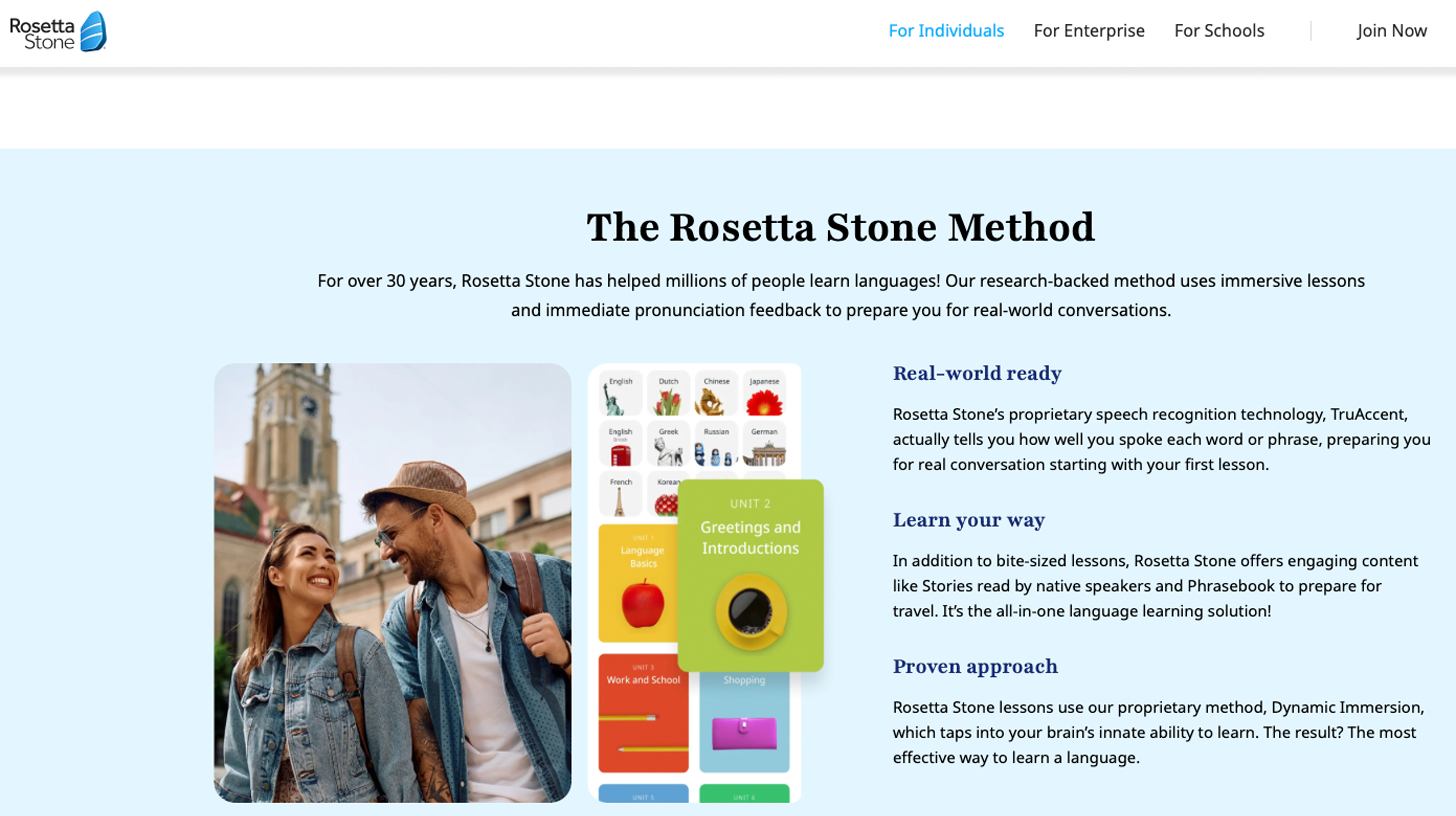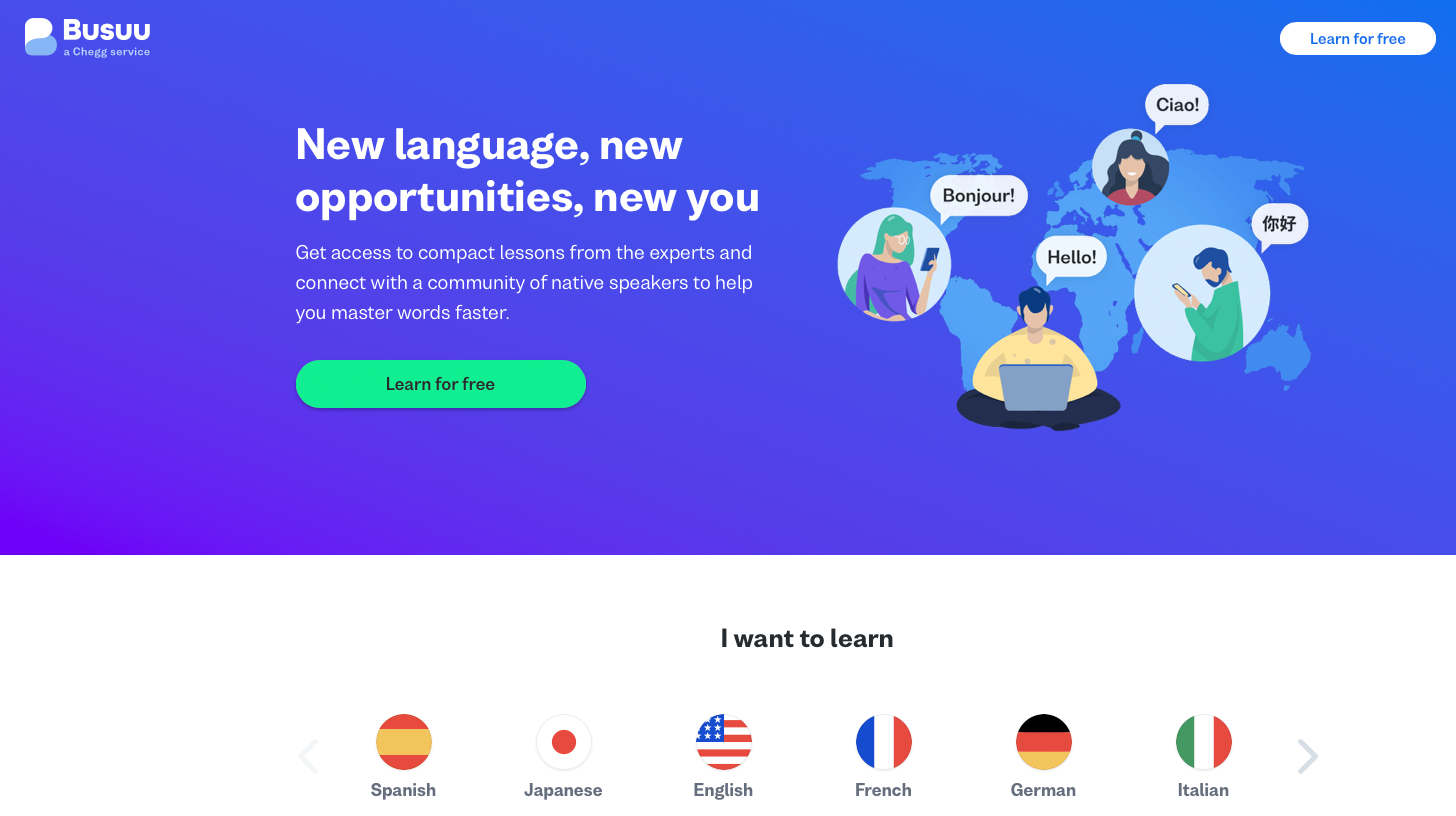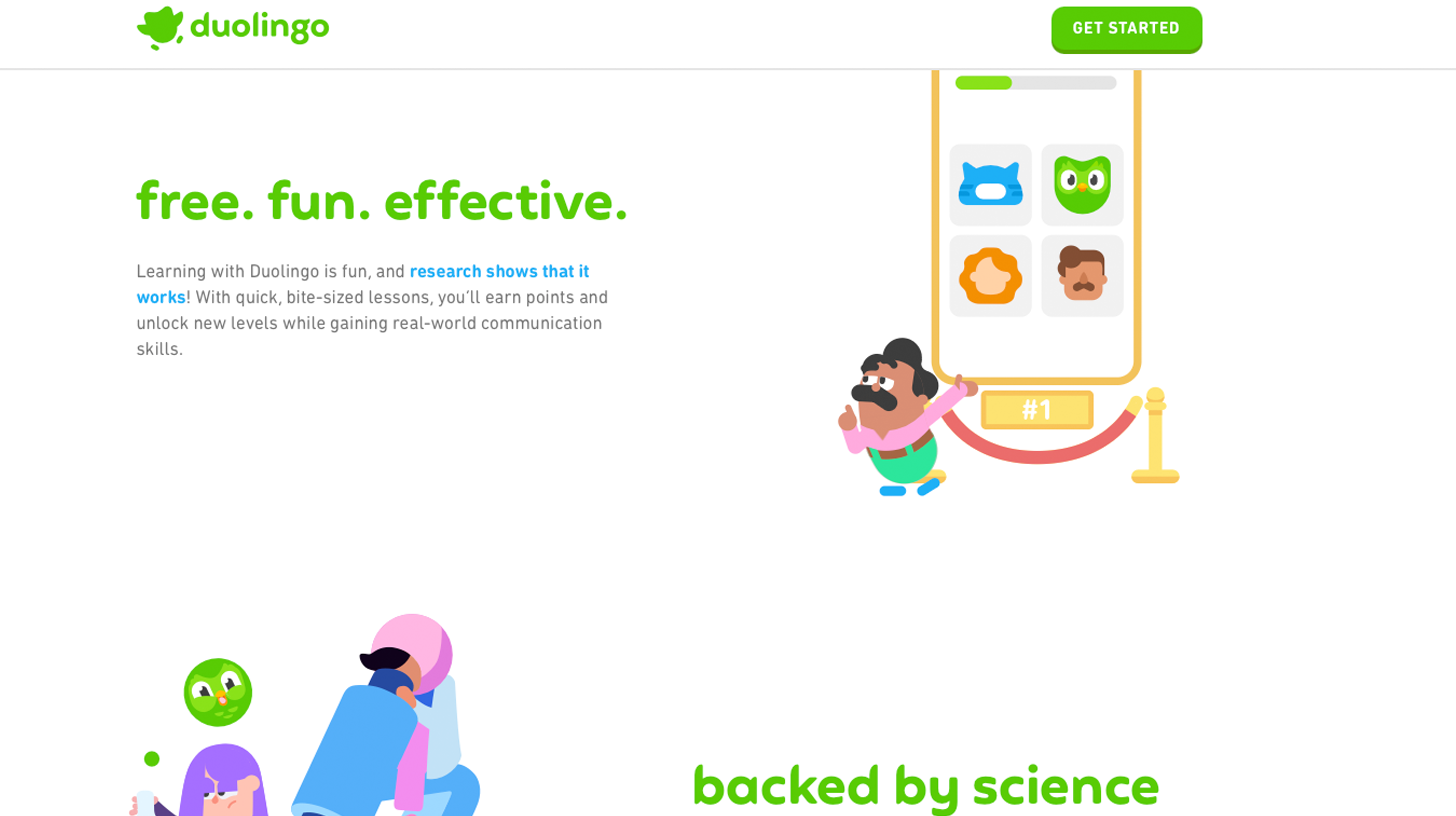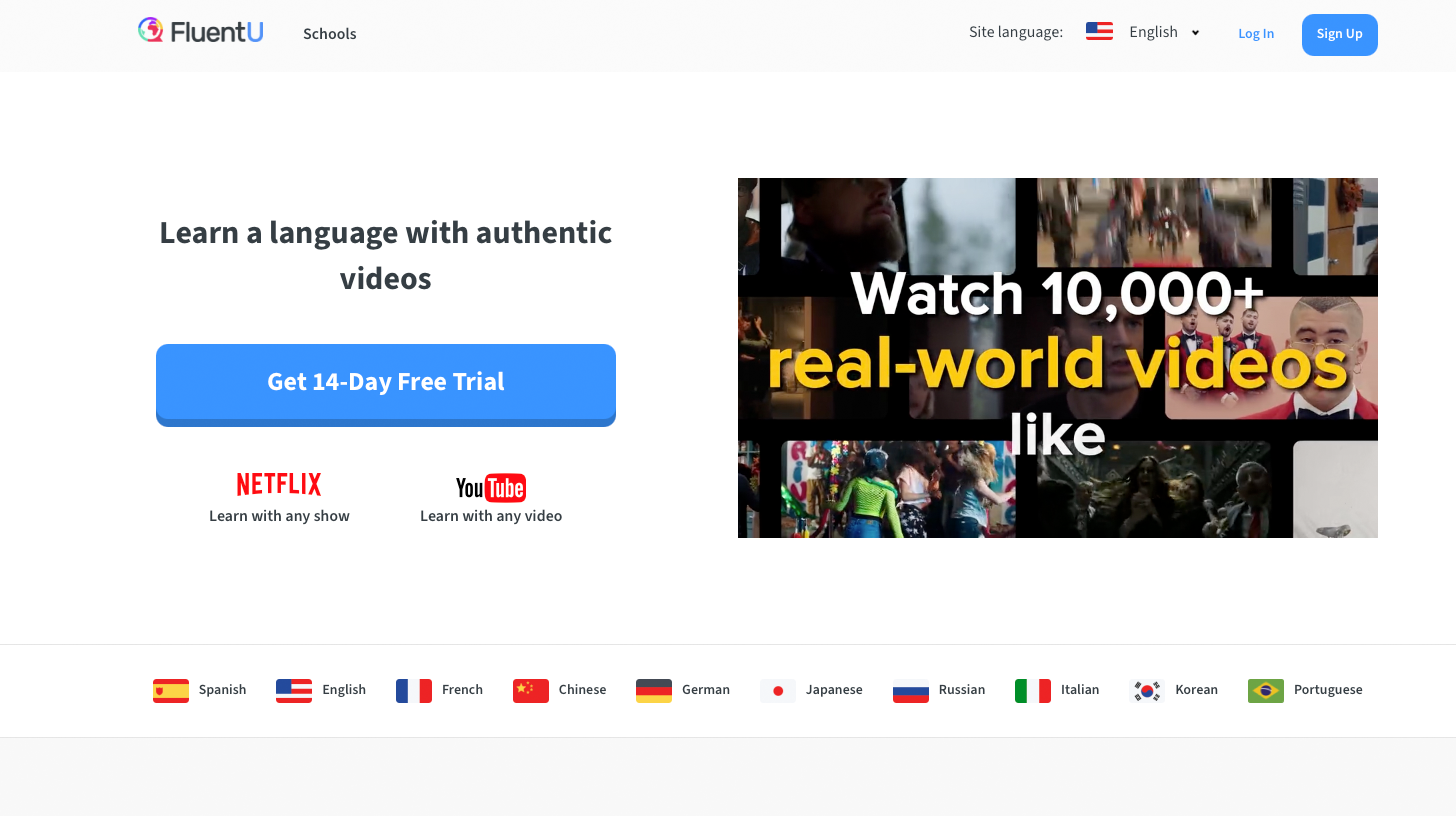Language learning has come a long way from dry textbooks and endless flashcards. As someone fluent in five languages, I truly wish I had these tools when I was just starting out. Thanks to AI-driven tools like Babbel, Rosetta Stone, Busuu, Duolingo, and FluentU, we now have interactive, adaptive platforms that tailor lessons to each learner’s strengths and weaknesses. From real-time pronunciation feedback and personalized quizzes to gamified challenges and immersive videos, these apps make picking up new vocabulary and mastering grammar both faster and more enjoyable. In short, they’ve revolutionized how we learn languages—turning what used to be a tedious task into a flexible, engaging adventure you can do anytime, anywhere.
Each tool shines in its own way—whether you’re looking for a gamified, free experience (Duolingo) or a more comprehensive curriculum (Babbel, Rosetta Stone, Busuu).
- Babbel (9.6/10) – Top recommendation for well-rounded lessons + spaced repetition.
- Rosetta Stone (9.0/10) – Immersive approach + excellent speech recognition.
- Busuu (8.8/10) – Structured CEFR courses + native speaker feedback.
- Duolingo (8.6/10) – Gamified, mostly free, but no classic affiliate program.
- FluentU (8.4/10) – Video-based immersion if you’re craving real-world context.
Not cracking the top 5, an honorable mention goes to Mondly (8.0/10).
Which tool is best for beginners, which for advanced learners, and which tool is best suited for kids? We will reveal that at the end of this review.
1. Babbel — Our Top Pick (9.6/10)

Why We Love It
Babbel offers a well-rounded, practical approach to language learning. Its AI-driven review manager identifies words or grammar points you struggle with, then prompts you to revisit them right before you forget—a technique known as spaced repetition.
Key Features
- Real-Life Dialogues: Focus on everyday conversations.
- Adaptive Lessons: Content evolves based on your progress.
- CEFR-Aligned: Progress from A1 to B2/C1 across various languages.
Pros
- Comprehensive coverage (listening, speaking, reading, writing).
- Short lessons tailored to busy lifestyles.
- In-depth grammar explanations.
Cons
- Primarily subscription-based, with only a handful of free lessons.
- May feel “traditional” compared to more gamified tools.
Pricing
- Plans often range $7–$14/month (depending on promos and billing cycle).
- Frequent discounts and bundle deals.
2. Rosetta Stone (9.0/10)

Why We Love It
Renowned for its immersion method, Rosetta Stone relies heavily on images and context rather than direct translations. Its TruAccent AI instantly pinpoints pronunciation errors, helping you sound more natural.
Key Features
- Immersive Lessons: Learn through visual cues and repetition.
- Speech Recognition: Proprietary TruAccent feedback engine.
- Offline Mode: Download lessons to learn anywhere.
Pros
- Long-established credibility in language education.
- Highly structured approach that’s easy to follow.
- Offers many less-common languages (e.g., Farsi, Tagalog).
Cons
- Pricier than competitors.
- The no-translation style may frustrate total beginners seeking direct explanations.
Pricing
- Monthly, annual, and lifetime plans.
- Occasional “lifetime” discounts and seasonal offers.
3. Busuu (8.8/10)

Why We Love It
Busuu combines AI-driven personalization with structured, CEFR-aligned courses. A popular draw is the built-in community, where native speakers correct your writing or speaking exercises.
Key Features
- Personalized Study Plans: Plug in your goals and timeline; Busuu suggests a plan.
- Community Feedback: Get corrections from native speakers.
- Mobile-Friendly: Lessons are bite-sized and offline-capable.
Pros
- Clearly organized levels (A1 to B2, and some languages go higher).
- Interactive approach with speaking and writing tasks.
- The free tier lets you sample basics.
Cons
- The best features (full lessons, advanced levels) require Premium.
- Fewer “fun” game elements than Duolingo or Memrise.
Pricing
- Free basic version.
- Premium from around $6–$10/month (often discounted).
4. Duolingo (8.6/10)

Why We Love It
The world’s most downloaded language app, Duolingo is famed for its gamified interface and daily streaks. Recently, it integrated GPT-4 in its Duolingo Max plan, which offers more advanced chat and conversation scenarios with real-time AI feedback.
Key Features
- Gamified Lessons: Earn XP, maintain streaks, unlock achievements.
- GPT-4 Integration: Available in premium plans for AI-driven practice.
- Wide Language Selection: From Spanish, French, and German to fictional languages like High Valyrian.
Pros
- Free core app with plenty of content.
- Engaging daily exercises, perfect for quick bursts.
- Encourages consistency with notifications and in-app rewards.
Cons
- Not a traditional “affiliate” program. (Offers referral perks, but not standard commissions.)
- Often criticized for superficial coverage of grammar at higher levels.
Pricing
- Core app is free, ad-supported.
- Super Duolingo (premium) and Duolingo Max (GPT-4) range from $7–$30/month, depending on the plan.
5. FluentU (8.4/10)

Why We Love It
FluentU converts real-world videos (news clips, trailers, music videos) into interactive lessons. AI-generated quizzes follow each video to reinforce newly introduced vocabulary in context.
Key Features
- Video Immersion: Subtitles, transcripts, and definitions all in real time.
- Progress Tracking: AI reintroduces challenging words in later exercises.
- Multi-Level Content: Filter videos by difficulty, topic, or genre.
Pros
- Ideal for improving listening comprehension and cultural insight.
- Learn new words in context—so they stick better.
- Effective if you’re bored with “textbook” methods.
Cons
- Pricier subscription compared to simpler apps.
- Less direct grammar instruction (you learn it indirectly through real usage).
Pricing
- 14-day free trial.
- Monthly plans typically start around $29.99/month (less if paid annually).
Final Thoughts
Best for Absolute Beginners and Kids: Duolingo
- Why: Duolingo’s highly gamified approach, bite-sized lessons, and free core offering make it an easy and low-pressure entry point for newcomers to language learning. The interface is simple and intuitive, so you won’t get bogged down with complex grammar on day one.
- Key Benefits: Daily streaks, playful visuals, and quick lessons keep motivation high for beginners who might otherwise feel overwhelmed.
Best for Advanced Learners: FluentU
- Why: FluentU immerses you in authentic videos—like movie trailers, news segments, and music videos—with interactive subtitles. This real-world content is ideal for honing advanced listening skills, picking up nuanced vocabulary, and understanding cultural context.
- Key Benefits:
- Advanced Vocabulary: You encounter words in their natural setting, which is crucial at higher levels.
- Adaptive Quizzes: The AI reintroduces challenging words in later lessons to reinforce retention.
Honorable Mentions for advanced learners:
Keep in mind that consistency is the key to language progress. A quick 10–15 minutes daily often trumps occasional multi-hour sessions. Try free trials or free tiers to see which style suits you best.
Criteria
| Criteria | Babbel | Rosetta Stone | Busuu | Duolingo | FluentU |
|---|---|---|---|---|---|
| 1. AI Adaptiveness | 10 | 9 | 9 | 9 | 9 |
| 2. Comprehensive Curriculum | 10 | 9 | 9 | 7 | 9 |
| 3. Engagement & Gamification | 9 | 8 | 8 | 10 | 9 |
| 4. Speech Recognition & Feedback | 9 | 10 | 8 | 8 | 7 |
| 5. Ease of Use & Design | 10 | 10 | 9 | 10 | 8 |
| 6. Price & Value | 9 | 8 | 9 | 9 | 7 |
| 7. Variety of Languages & Levels | 10 | 9 | 8 | 9 | 7 |
| 8. Cultural/Contextual Learning | 10 | 9 | 9 | 6 | 10 |
| 9. Additional Features | 10 | 9 | 8 | 9 | 9 |
| 10. Community & Social Features | 9 | 9 | 10 | 9 | 9 |
| Overall Rating (Out of 10) | 9.6 | 9.0 | 8.8 | 8.6 | 8.4 |


